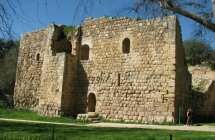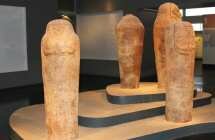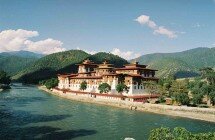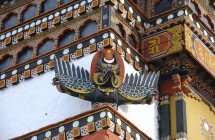Makhtesh Ramon is the world’s largest makhtesh. The makhtesh or natural crater is a unique geological formation, indigenous to the Holy Land which is 40 km long, 2–10 km wide and 500 meters deep. It’s shaped like an elongated heart. A small town, Mitzpe Ramon, with the Ramon Observation Point, is located on the northern edge of the crater.
Hundreds of millions of years ago, the Negev desert was covered by an ocean. When the two tectonic plates (the Arabian and African plates) collided, hills and mountains were formed by the force of pressure. This caused the waters to slowly recede northwards leaving behind mountains and hills. The mountain was slowly flattened by the water and climatic forces. Approximately five million years ago, the Syrian-African Rift Valley was formed, with rivers changing their course from west to east, carving out the inside softer and newer rock of the mountain until it formed a crater. The crater bottom continued to deepen at a much faster rate than the surrounding walls. As the crater deepened, more layers of ancient rock were exposed some being up to 200 million years old.
Makhtesh Ramon contains a diversity of rocks and sands known for their fantastic red, purple, brown, green and yellow colors and forms. Impressive mountains rise at the borders of the crater. The hills at the south-eastern edge of the makhtesh were once entirely covered by spiral ammonite fossils, ranging from the size of snails to that of huge wheels. Only smaller fossils can be found here today.
There are many marked, easy to follow, trails all around the makhtesh and above, that can be hiked by foot or followed by bikes, cars, and jeeps. Best season to visit is winter and spring.
Ruins of a large stone structure, known as Khan Saharonim, is located in the makhtesh. It is one of many posts along the ancient Spice & Incense Routes from Petra to Gaza, used by the Nabateans more than 2,000 years ago.
Ein Saharonim Spring is the only natural water source in the makhtesh, therefore drawing an abundant range of wildlife including onagers (wild ass), hyrax, fox, deer, hyenas, ibex and many species of wild birds including vultures.
Mitzpe Ramon has six hotels and dozens of B&B establishments. Isrotel opened a luxury hotel, the Beresheet (Genesis) Hotel only 5 years ago.
By bus, taxi or guided tour.
 Fateh Sagar Lake
Fateh Sagar Lake  Koh Dach, near Phnom Penh
Koh Dach, near Phnom Penh  Aqua Bella
Aqua Bella  Western Wall Jerusalem
Western Wall Jerusalem  Delhi Cantonment
Delhi Cantonment  Holy Sepulcher Jerusalem
Holy Sepulcher Jerusalem  Western Wall Jerusalem
Western Wall Jerusalem  The Roman Byzantine Cardo Jerusalem
The Roman Byzantine Cardo Jerusalem
 The Wide Wall Jerusalem
The Wide Wall Jerusalem
 Church of St. John the Baptist, Ein Karem...
Church of St. John the Baptist, Ein Karem...  Church of the Visitation, Ein Karem, Jeru...
Church of the Visitation, Ein Karem, Jeru...  Yad Vashem, Jerusalem
Yad Vashem, Jerusalem  City of David, Jerusalem
City of David, Jerusalem  Western Wall Tunnel Tour Jerusalem
Western Wall Tunnel Tour Jerusalem  Israel Museum Jerusalem
Israel Museum Jerusalem  Church of St. Peter in Gallicanto, Jerusa...
Church of St. Peter in Gallicanto, Jerusa...  Masada, the Mountain Fortress
Masada, the Mountain Fortress  Caesarea
Caesarea  Bahai Gardens and German Colony
Bahai Gardens and German Colony  Kanna (Cana), the Holy Land
Kanna (Cana), the Holy Land  Mount Tabor (Tavor)
Mount Tabor (Tavor)  Mt. Beatitudes, The Holy Land
Mt. Beatitudes, The Holy Land  Tabgha, The Holy Land
Tabgha, The Holy Land  Primacy of Petros, Tabgha
Primacy of Petros, Tabgha  Capernaum, The Holy Land
Capernaum, The Holy Land  Yardenit, The Holy Land
Yardenit, The Holy Land  Tel Dan, The Holy Land
Tel Dan, The Holy Land  Caesarea Philippi, The Holy Land
Caesarea Philippi, The Holy Land  Mt. Bental, Golan Heights
Mt. Bental, Golan Heights  Golan Heights Winery
Golan Heights Winery  Mt. Beatitudes, The Holy Land
Mt. Beatitudes, The Holy Land  Yaffo (Jaffa), The Holy Land
Yaffo (Jaffa), The Holy Land  Old Train Station, Yaffo – Tel-Aviv
Old Train Station, Yaffo – Tel-Aviv  Tel Aviv, Israel
Tel Aviv, Israel  Sarona, Tel Aviv
Sarona, Tel Aviv  Be’er Sheva & Tel Sheva, The Ho...
Be’er Sheva & Tel Sheva, The Ho...  Sde Boker, The Holy Land
Sde Boker, The Holy Land  Avdat (Ovdat), The Holy Land
Avdat (Ovdat), The Holy Land  The Kingdom of Jerusalem, The Holy Land
The Kingdom of Jerusalem, The Holy Land  The Saraya House, Tel Aviv – Yaffo
The Saraya House, Tel Aviv – Yaffo  The Zodiac alleys, Tel Aviv – Yaffo
The Zodiac alleys, Tel Aviv – Yaffo  Yaffo Hill, Tel Aviv – Yaffo
Yaffo Hill, Tel Aviv – Yaffo  Yaffo Lighthouse, Tel Aviv – Yaffo
Yaffo Lighthouse, Tel Aviv – Yaffo  Yaffo Museum, Tel Aviv – Yaffo
Yaffo Museum, Tel Aviv – Yaffo  The Greek Orthodox Monastery, Tel Aviv Ya...
The Greek Orthodox Monastery, Tel Aviv Ya...  The Church of St. Petros and St. Tabitha,...
The Church of St. Petros and St. Tabitha,...  St. Peter’s Church, Tel Aviv Yaffo
St. Peter’s Church, Tel Aviv Yaffo  Immanuel Church, Tel Aviv – Yaffo
Immanuel Church, Tel Aviv – Yaffo  St. Nicholas Armenian Monastery, Tel Aviv...
St. Nicholas Armenian Monastery, Tel Aviv...  Al-Bahr Mosque, Tel Aviv – Yaffo
Al-Bahr Mosque, Tel Aviv – Yaffo  Mahmoudiya Mosque, Tel Aviv – Yaffo
Mahmoudiya Mosque, Tel Aviv – Yaffo  Gorny Convent, Ein Kerem
Gorny Convent, Ein Kerem  Ussishkin House, Tel Aviv – Yafo
Ussishkin House, Tel Aviv – Yafo  Pagoda House, Tel Aviv – Yafo
Pagoda House, Tel Aviv – Yafo  The Russian Embassy, Tel Aviv – Yaf...
The Russian Embassy, Tel Aviv – Yaf...  Berlin-Psovski Building, Tel Aviv –...
Berlin-Psovski Building, Tel Aviv –...  Hagana Museum, Tel Aviv – Yafo
Hagana Museum, Tel Aviv – Yafo  Bialik House, Tel Aviv – Yafo
Bialik House, Tel Aviv – Yafo  Arie Weiss Home, Tel Aviv – Yafo
Arie Weiss Home, Tel Aviv – Yafo  Chariton Monastery, The Holy Land
Chariton Monastery, The Holy Land  Ein Mabu’a, The Holy Land
Ein Mabu’a, The Holy Land  St. George Monastery, The Holy Land
St. George Monastery, The Holy Land  Euthymius Monastery, The Holy Land
Euthymius Monastery, The Holy Land  Good Samaritan Inn, The Holy Land
Good Samaritan Inn, The Holy Land  St. Gerasimos Monastery, The Holy Land
St. Gerasimos Monastery, The Holy Land  Qasr el Yahud, The Holy Land
Qasr el Yahud, The Holy Land  Hội An
Hội An  Ha Long Bay
Ha Long Bay  Ancient Acropolis in Bergama
Ancient Acropolis in Bergama  Mount Abu in Rajasthan
Mount Abu in Rajasthan  Lakshadweep – India’s tiniest...
Lakshadweep – India’s tiniest...  Kodaikanal – The Princess of Hill S...
Kodaikanal – The Princess of Hill S...  Gal Vihara Statues
Gal Vihara Statues  Punakha Dzong
Punakha Dzong  Trashichho Dzong
Trashichho Dzong  Taktshang Goemba
Taktshang Goemba  National Memorial Chorten
National Memorial Chorten  Coorg – Scotland Of India
Coorg – Scotland Of India  Samadhi Statue
Samadhi Statue  Ruwanwelisaya Stupa
Ruwanwelisaya Stupa  Andaman and Nicobar Islands
Andaman and Nicobar Islands  Sepilok Orangutan
Sepilok Orangutan  Victoria Memorial
Victoria Memorial  Ladakh – India’s Little Tibet
Ladakh – India’s Little Tibet  Bhangarh Fort
Bhangarh Fort  Tokyo Midtown
Tokyo Midtown  Asakusa and Sensoji Temple
Asakusa and Sensoji Temple  Tokyo Sky Tree
Tokyo Sky Tree  Tokyo Dome City
Tokyo Dome City  Sunshine City Aquarium
Sunshine City Aquarium 